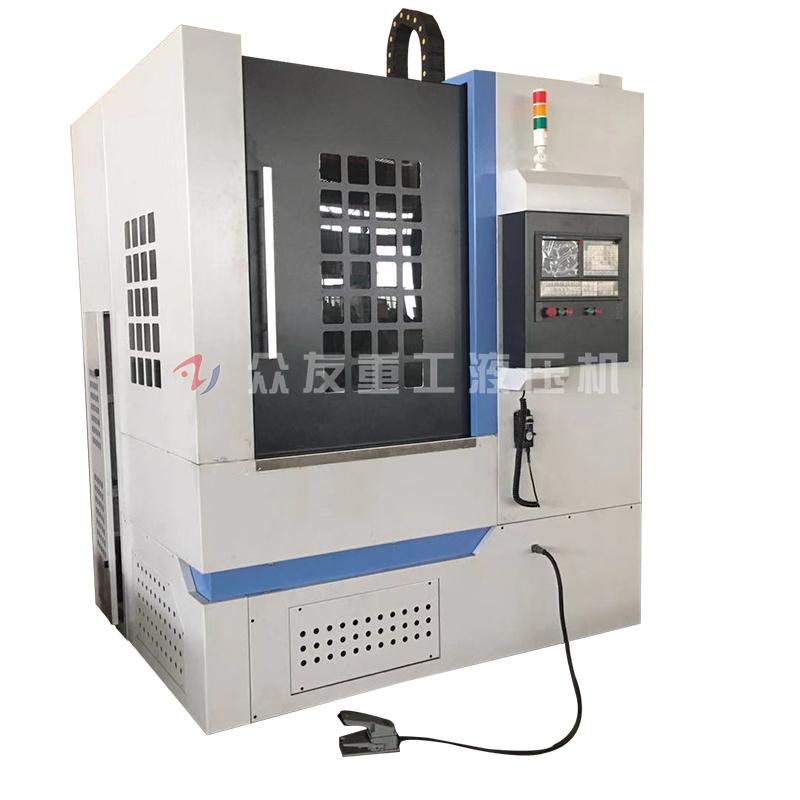CNC vertical latheCan be equipped with numerical control system according to user requirements, with X-axis (horizontal movement of the tool holder), Z-axis (ram up and down movement) two coordinate linkage feed function. The main basic parts of CNC vertical lathe adopt thermal symmetry structure, which improves the thermal stability. The radial direction is centered with high-precision double-row centripetal short roller bearings, and the axial direction is carried by large ball thrust bearings.
The main transmission adopts a planetary gear transmission structure with two-stage mechanical speed change and is driven by a wide-adjustable magnetic DC motor. The tool holder and ram are driven by ball screw nut for movement. The guide rail adopts a pump-type preload constant-current hydrostatic guide rail per cavity. The working noise of the whole machine is small. The position detecting element adopts a grating ruler or a pulse encoder.
CNC vertical lathe in the processing process, subject to a variety of external forces, including moving parts and workpiece weight, cutting force, driving force, acceleration and deceleration of the inertia force, friction resistance. The various components of the vertical lathe will deform under the action of these forces, such as the bending and torsional deformation of the basic members, the local deformation of the support member, the contact deformation of the fixed connection surface and the moving engagement surface, etc. These deformations will directly or indirectly cause the relative displacement between the tool and the workpiece, destroying the correct position of the tool and the workpiece, thus affecting the machining accuracy of the machine tool and the characteristics of the cutting process. Therefore, improving the static stiffness of the machine tool is a universal requirement for the structural design of the machine tool.
CNC vertical lathe in order to obtain high efficiency and has high power and high speed, so that it bears a variety of external load more bad, and the automation of the processing process also makes the machining error can not be corrected and compensated by manual intervention, so, CNC vertical lathe deformation of the machining accuracy will be more serious. Therefore, in order to ensure that the CNC vertical lathe obtains stable high precision under the automatic and high-efficiency cutting conditions, its mechanical structure should have higher static stiffness, and the standard stipulates that the stiffness coefficient of the vertical lathe should be 50% higher than that of similar ordinary machine tools.
Under the action of external force, each base part will bear bending and torsional load. The size of bending and torsional deformation depends on the bending and torsional moment of inertia of the section of the base part. The bending and torsional moment of inertia is large. The deformation is small and the stiffness is high. Moments of inertia for different cross-sectional shapes and sizes. When the shape and cross-sectional area are the same, the rigidity can be greatly increased by reducing the wall thickness and increasing the cross-sectional contour size. The rigidity of closed section is much higher than that of unclosed section. The torsional rigidity of circular section is higher than that of square section, while the bending rigidity is lower than that of square section. Rectangular section has high bending rigidity in the direction of large size. Therefore, the structural static rigidity of the base member can be greatly improved by reasonably designing the cross-sectional shape and size.











